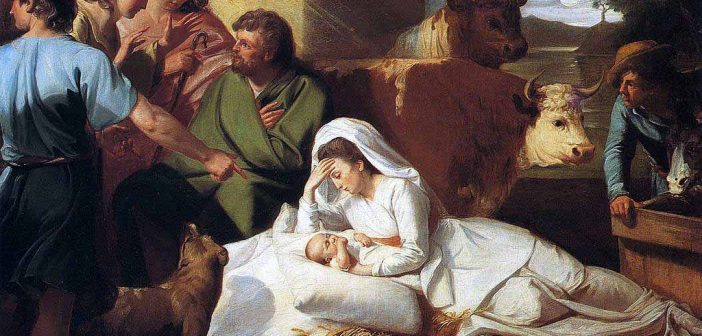(Featured image: “The Nativity” by John Singleton Copley, 1738-1815)
What makes the festive season so special is that sense of hope and expectation leading up to Christmas Day. Hope is a powerful emotion and few sights are able to inspire more hope than that of a new life entering the world.
Perhaps that is why the nativity scene is so timeless in its ability to evoke anticipation, optimism and promise. It was in fact St. Francis of Assisi who was credited with creating the first nativity display in 1223, turning the Biblical story into a living, breathing, noisy, smelly tableau that brought a once elusive story into vivid experience.
Today, from children’s school plays to Christmas cards, Church posters to product advertisements, this scene of the infant Christ in a manger surrounded by inquisitive farmyard animals is a firm part of our traditional Christmas celebrations.
Christmas underscores the emotive power of the amazing animals with whom we share our world. A nativity image, no matter how sentimentally portrayed, reminds us of the beauty and innocence of these endlessly mysterious and familiar beings who live complex lives beyond our control or comprehension.
The birth of Christ is a prime opportunity to remember that Christmas is not just about humanity. Rather, the arrival of the infant Christ promises cosmic, restorative consequences for the whole of creation.
The hope of the nativity challenges us to look beyond the darker side of our use and abuse of animals to a manger scene which compels us to live out the love, mercy and compassion of Christ in the here and now.
Top Tips for Realising Hope This Christmas
- Keep animals and animal causes in your personal prayers.
- Encourage your church to feature animal issues in its nativity services, intercessions, worship, children work or sermons (Click here to read how you can welcome a Sarx speaker)
- Choose a delicious meat free menu option this Christmas such chestnut and Mushroom pie, stuffed aubergine with tomato garlic sauce or sweet potato, sage and onion tart. Click here for recipes.
- Save on trees by opting for recycled cards or environmentally friendly e-cards to send your Christmas greeting.
- Avoid Christmas events which feature live animals unless they are in their natural environment. Despite being marketed as family fun, reindeers and other farmyard animals don’t belong in shopping centres which can be very stressful for them.
- Don’t give animals as Christmas gifts. The RSPCA reports that three unwanted pets are abandoned every hour over the Christmas period.
- Choose eco- and animal friendly gifts for your friends and family by avoiding fur or leather goods.
- Book your place for next year’s Creature Conference which will equip Christians to engage theologically and practically with animal issues. Click here to book your ticket.






